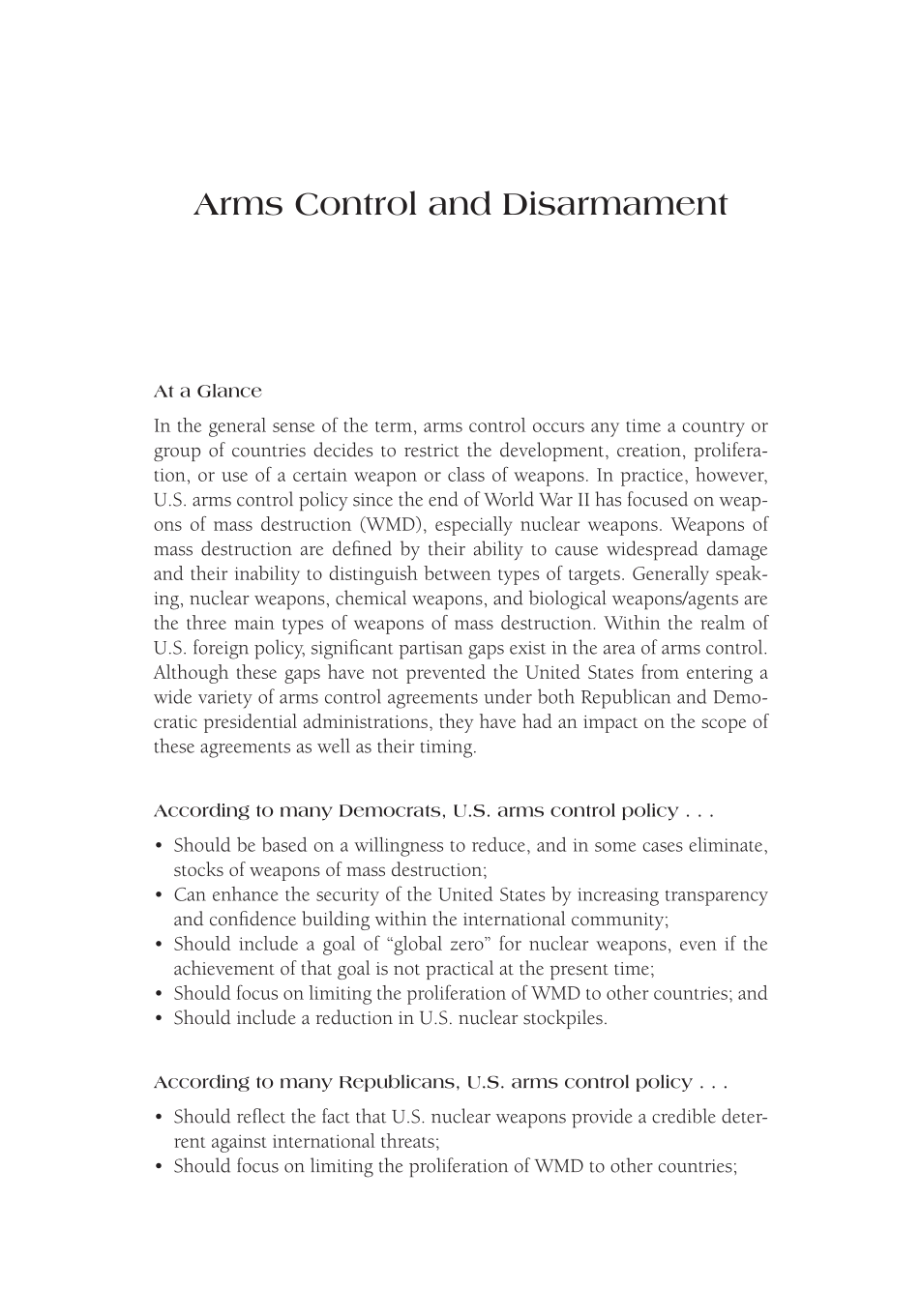Arms Control and Disarmament
At a Glance
In the general sense of the term, arms control occurs any time a country or
group of countries decides to restrict the development, creation, prolifera-
tion, or use of a certain weapon or class of weapons. In practice, however,
U.S. arms control policy since the end of World War II has focused on weap-
ons of mass destruction (WMD), especially nuclear weapons. Weapons of
mass destruction are defined by their ability to cause widespread damage
and their inability to distinguish between types of targets. Generally speak-
ing, nuclear weapons, chemical weapons, and biological weapons/agents are
the three main types of weapons of mass destruction. Within the realm of
U.S. foreign policy, significant partisan gaps exist in the area of arms control.
Although these gaps have not prevented the United States from entering a
wide variety of arms control agreements under both Republican and Demo-
cratic presidential administrations, they have had an impact on the scope of
these agreements as well as their timing.
According to many Democrats, U.S. arms control policy . . .
• Should be based on a willingness to reduce, and in some cases eliminate,
stocks of weapons of mass destruction;
• Can enhance the security of the United States by increasing transparency
and confidence building within the international community;
• Should include a goal of “global zero” for nuclear weapons, even if the
achievement of that goal is not practical at the present time;
• Should focus on limiting the proliferation of WMD to other countries; and
• Should include a reduction in U.S. nuclear stockpiles.
According to many Republicans, U.S. arms control policy . . .
• Should reflect the fact that U.S. nuclear weapons provide a credible deter-
rent against international threats;
• Should focus on limiting the proliferation of WMD to other countries;




























































































































































































































































































































































































































